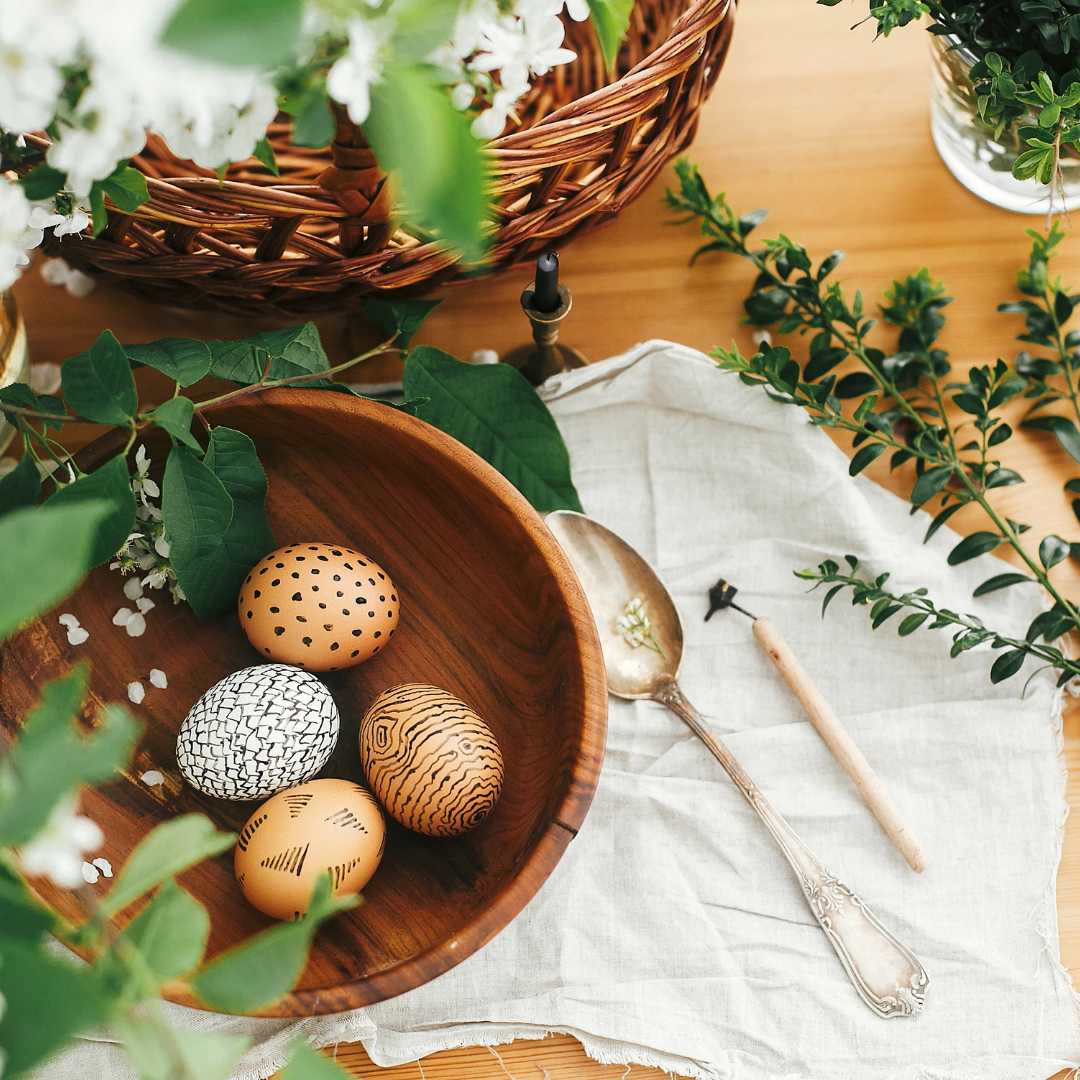Sarah Guerrero
Sarah Guerrero is a freelance writer and contributor to Slow North. She has a degree in international business from St. Mary’s University in San Antonio, Texas, and writes about sustainable business practices and ethical living.



Maybe it’s the spring after a long winter or the hopeful promise of eggs and flowers, but Easter feels extra special this year. What does not feel very Easter-ish, however, is the plastic! I want my Easter to be happy and hopeful for the earth, too! Today, we’re sharing seven ways we can have a more eco-friendly Easter and honor the planet!
50% of all candy produced is single-use. And never is that more true during Easter, when treats and candies are packaged in single-use, disposable plastics. One way to reduce your waste is to choose treats at a local bulk bar (my favorites are gummy bears, but you do you).
Easter egg hunts don’t have to be all about those practically disposable plastic eggs! Instead, try small reusable bags.
Or, check out these simple wooden eggs to tuck your Easter treats into. You can also try skipping the eggs and candy altogether and simply hiding small toys or gifts. Or, hide real eggs, hardboiled and/or decorated!

Toys are a great swap for candy. We love wooden toys made from eco-friendly materials. Not only are they better for the environment, but they tend to last longer than disposable plastic ones, and they tend to engage kids’ imaginations so much better!
Instead of lining Easter baskets with garishly-colored plastic “grass,” try using real grass, twigs, or leaves. You can also use paper from your recycling bin, torn into strips, or use recyclable gift filler.
 Photo by Bady Abbas
Photo by Bady Abbas
A great way to minimize waste is by going second-hand! You can grab Easter baskets or even Easter gifts or small toys from second-hand stores, or try your local neighborhood buy/sell/trade or zero waste groups.
There are so many fun and really beautiful ways to decorate eggs, but dying them naturally is also super simple! Here’s a great recipe for using simple ingredients you probably already have on hand (coffee, red wine, onions).

Advertising peaks around holidays, and it’s easy to get caught up in the materialism of it all. Here’s your permission to focus more on traditions and experiences rather than physical gifts. How can you spend time with the people you love?
Dying eggs, getting lost on your next walk, or making a new spring recipe are all lovely ways to celebrate Easter, and you don’t have to buy a thing!

Featured collection